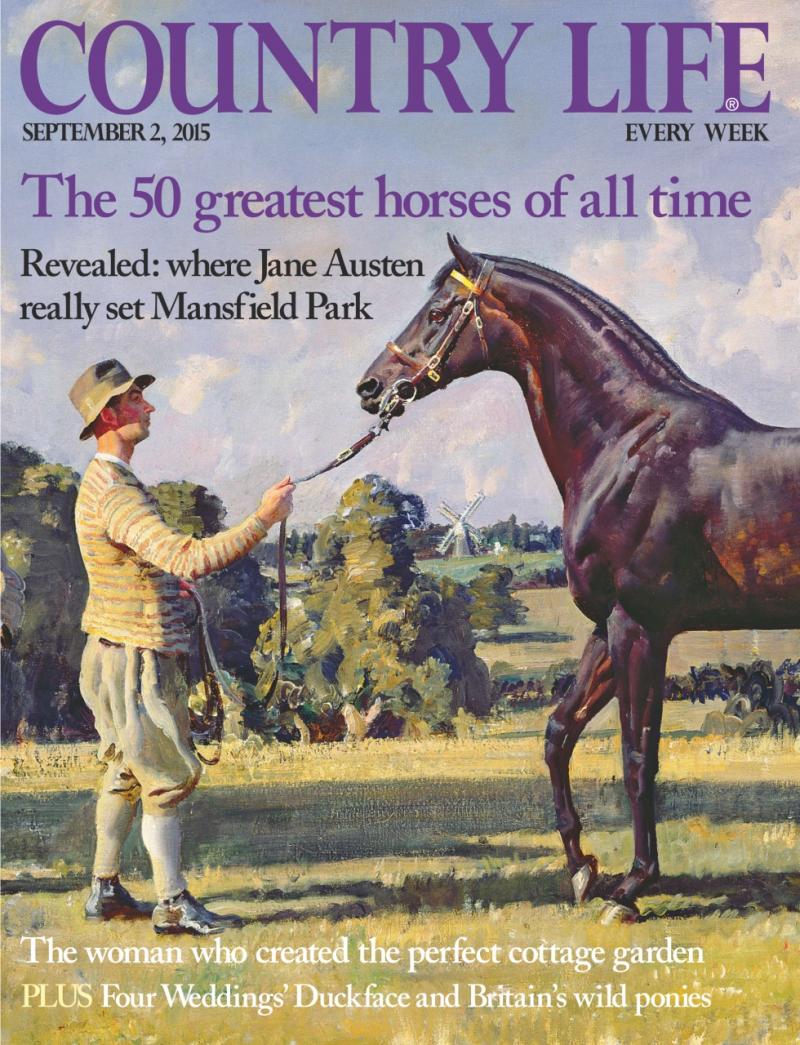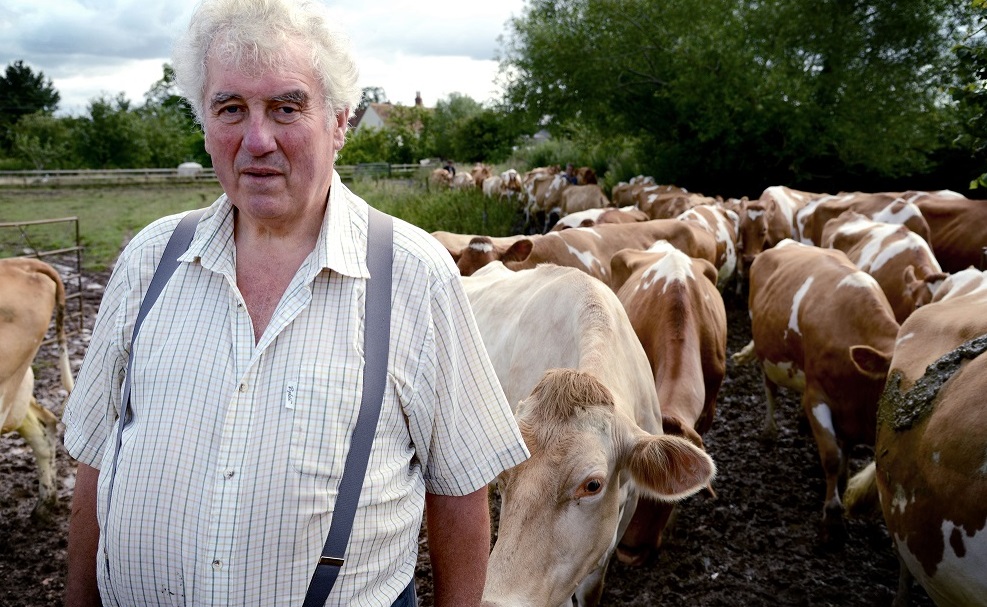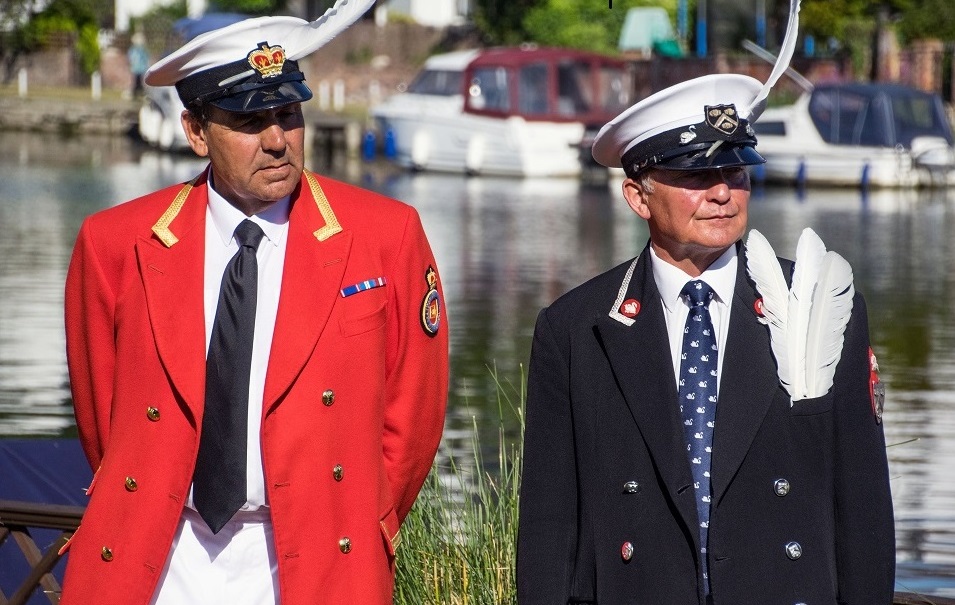Land of Hope and Glory, BBC Two | reviews, news & interviews
Land of Hope and Glory, BBC Two
Land of Hope and Glory, BBC Two
Pearls and swine: inside the eccentric world of 'Country Life' magazine

The weekly magazine Country Life was founded in 1897, and is now perhaps improbably owned by Time Inc UK. Its popular image among people who do not necessarily ever look at it is defined by the famous (or infamous) girls in pearls: those portraits of well-groomed fiancées, a kind of weekly visual equivalent of – say – Desert Island Discs for prosperous young aristos, which introduce the articles of each issue.
This time round it was a Yorkshire lass, Ella Charlotte Clark, posed in a vast field, against a fence, accompanied by her faithful dog. Her fiancé, a serving Army officer, had suggested the photograph to Country Life; it is a badge of honour for a certain class. The weekly photograph, mostly accompanying engagement announcements, leads into the magazine’s articles after the bemused reader has turned over scores of pages of luscious property porn, country estates throughout the land up for sale, and elaborate fine and decorative arts advertisements. Country Life has a small audited circulation, less than 40,000, but its reach extends far beyond the waiting rooms of posh dentists, and its advertising (unmentioned here) is definitely read by the buyers and sellers of such gorgeous stuff.
Any reverse snobs - and snobs - out there, have a look
This sensitive, highly watchable programme, the first of three from director Jane Treays (last found embedded in another top-drawer British institution with Inside Claridge’s) is based on a year’s filming in the office and out and about. The result both confirmed conventional images of the magazine and simultaneously confounded and contradicted them. It set out its stall with the claim that the publication was an attempt to “capture the elusive soul of the English countryside”, the film’s subtitle “British Country Life” clearly indicating medium and message alike. It reminded us that in Britain at least the countryside is very, very muddy – literally, with views of gumboots squelching through the damp earth.
The calmly authoritative editor, Mark Hedges, bemoaned the lack of understanding on the part of urban England: Hedges was the editor of Horse and Hound before ascending to Country Life, so the land is in his blood. The statistics were disturbing if country values are to be, well, valued. Only 18% of the population lives in the country, while 80% live in the cities and the suburbs (yes, it does not quite add up – where is the missing two percent?).
 And only four percent work on the land. Sir Roy Strong, with flowing white hair and beard, asserted that Country Life saw the whole island as a Greater England, a southern view, and that its security and continuity, in those villages, market towns and old families, was an artificial vision. We heard several times that it was but a dream; if the Englishman’s home was his castle (we glimpsed one or two), the garden was its earthly paradise.
And only four percent work on the land. Sir Roy Strong, with flowing white hair and beard, asserted that Country Life saw the whole island as a Greater England, a southern view, and that its security and continuity, in those villages, market towns and old families, was an artificial vision. We heard several times that it was but a dream; if the Englishman’s home was his castle (we glimpsed one or two), the garden was its earthly paradise.
Cue gardening editor, and a glimpse of one of the 4,000 gardens opened annually for charity, the chatelaine supervising and even baking endless Victoria sponges and coffee walnut cakes for the obligatory tea herself. Judith and Andrew Huxley were the owners; his role, he said, was as the unpaid third undergardener, but Mrs Huxley, giggling, said he was there to pay for it all: they raised £350 on their day, and a good time was had by all.
The running theme in this first instalment was tragic, though; think badgers, wild animals and farm animals. The leading protagonist was a Somerset dairy farmer, Maurice Durbin (pictured above), born to his trade, the modest natal homestead in the picture, complete with an enchanting four-year-old grandson, already helping to feed the calves. He told us that “the bloody do-gooders interfere with everything we do”. The epic horror story was tuberculosis in cattle, and Durbin’s prize herd of carefully bred Guernseys, among the finest in the country, was terminally threatened. The docile creatures, Bambi-eyed, were tested every 60 days, and forbidden, whether healthy or not, to visit the county shows, essentially under farm arrest.
 We witnessed a testing, and saw two much-loved animals sent to the abattoir. The human family mourned. Each Guernsey cow had been raised from birth, had a name, and was worth some £3,000. No one knew what to do about the badgers: farmers on the ground want a cull, as protecting the badger has led to an explosion of setts, and are passionately resentful of the lack of understanding on the part of urbanites. Thirty-eight thousand cows have been killed so far.
We witnessed a testing, and saw two much-loved animals sent to the abattoir. The human family mourned. Each Guernsey cow had been raised from birth, had a name, and was worth some £3,000. No one knew what to do about the badgers: farmers on the ground want a cull, as protecting the badger has led to an explosion of setts, and are passionately resentful of the lack of understanding on the part of urbanites. Thirty-eight thousand cows have been killed so far.
The heart of the magazine was defined as horses, gardens, architecture, and houses. We were offered a neatly extended visit with the magnificently knowledgeable Philip Mansell (himself a founder of the Court History Society, unmentioned here), owner of a Dorset home that has been in the same family for over three centuries. The architectural editor, John Goodall, and company came on a visit to see the new exhibitions and displays and write its history.
At times it almost sent itself up with attractive geniality: the magazine’s deputy editor, Rupert Uloth, has been a steward at the Royal Bath and West County Show, and came complete with the bowler hat that accompanies that role. He defined the event as a leading fashion show for animals, although looking thoughtfully at a huge bull also remarked there were not too many similarities to Kate Moss. Jane How, a down-to-earth farmer, pointed out the difficulties of keeping her white cattle pristine for show time; a sow of almost unimaginable size was wheeled about. But we were reminded that much farming is rather isolated, and that this was not only a fair in which prizes of all kinds were awarded to all kinds of domestic animals, but where information was exchanged and moral support in these difficult days for agriculture readily provided.
Mark Hedges exhibited a neatly surprising humour, despatching Country Life’s previous editor, the fastidious Clive Aslet, to report on yet another of England’s rituals, swan-upping on the Thames – 79 miles in five days, in a rag, tag and bobtail flotilla, catching and counting swans, with an occasional human dunking, and a very proud red-uniformed Queens Royal Swan Marker (David Barber, pictured above left, left); this annual foray is centuries-old.
This was simultaneously affectionate, hilarious – intentionally and sometimes perhaps not – extremely informative, and surprisingly compelling viewing. Any reverse snobs – and snobs – out there, have a look. And with any luck, it might do wonders for the circulation.
Add comment
The future of Arts Journalism
You can stop theartsdesk.com closing!
We urgently need financing to survive. Our fundraising drive has thus far raised £49,000 but we need to reach £100,000 or we will be forced to close. Please contribute here: https://gofund.me/c3f6033d
And if you can forward this information to anyone who might assist, we’d be grateful.

Subscribe to theartsdesk.com
Thank you for continuing to read our work on theartsdesk.com. For unlimited access to every article in its entirety, including our archive of more than 15,000 pieces, we're asking for £5 per month or £40 per year. We feel it's a very good deal, and hope you do too.
To take a subscription now simply click here.
And if you're looking for that extra gift for a friend or family member, why not treat them to a theartsdesk.com gift subscription?
more TV
 Blu-ray: The Sweeney - Series One
Influential and entertaining 1970s police drama, handsomely restored
Blu-ray: The Sweeney - Series One
Influential and entertaining 1970s police drama, handsomely restored
 I Fought the Law, ITVX review - how an 800-year-old law was challenged and changed
Sheridan Smith's raw performance dominates ITV's new docudrama about injustice
I Fought the Law, ITVX review - how an 800-year-old law was challenged and changed
Sheridan Smith's raw performance dominates ITV's new docudrama about injustice
 The Paper, Sky Max review - a spinoff of the US Office worth waiting 20 years for
Perfectly judged recycling of the original's key elements, with a star turn at its heart
The Paper, Sky Max review - a spinoff of the US Office worth waiting 20 years for
Perfectly judged recycling of the original's key elements, with a star turn at its heart
 The Guest, BBC One review - be careful what you wish for
A terrific Eve Myles stars in addictive Welsh mystery
The Guest, BBC One review - be careful what you wish for
A terrific Eve Myles stars in addictive Welsh mystery
 theartsdesk Q&A: Suranne Jones on 'Hostage', power pants and politics
The star and producer talks about taking on the role of Prime Minister, wearing high heels and living in the public eye
theartsdesk Q&A: Suranne Jones on 'Hostage', power pants and politics
The star and producer talks about taking on the role of Prime Minister, wearing high heels and living in the public eye
 King & Conqueror, BBC One review - not many kicks in 1066
Turgid medieval drama leaves viewers in the dark
King & Conqueror, BBC One review - not many kicks in 1066
Turgid medieval drama leaves viewers in the dark
 Hostage, Netflix review - entente not-too-cordiale
Suranne Jones and Julie Delpy cross swords in confused political drama
Hostage, Netflix review - entente not-too-cordiale
Suranne Jones and Julie Delpy cross swords in confused political drama
 In Flight, Channel 4 review - drugs, thugs and Bulgarian gangsters
Katherine Kelly's flight attendant is battling a sea of troubles
In Flight, Channel 4 review - drugs, thugs and Bulgarian gangsters
Katherine Kelly's flight attendant is battling a sea of troubles
 Alien: Earth, Disney+ review - was this interstellar journey really necessary?
Noah Hawley's lavish sci-fi series brings Ridley Scott's monster back home
Alien: Earth, Disney+ review - was this interstellar journey really necessary?
Noah Hawley's lavish sci-fi series brings Ridley Scott's monster back home
 The Count of Monte Cristo, U&Drama review - silly telly for the silly season
Umpteenth incarnation of the Alexandre Dumas novel is no better than it should be
The Count of Monte Cristo, U&Drama review - silly telly for the silly season
Umpteenth incarnation of the Alexandre Dumas novel is no better than it should be
 The Narrow Road to the Deep North, BBC One review - love, death and hell on the Burma railway
Richard Flanagan's prize-winning novel becomes a gruelling TV series
The Narrow Road to the Deep North, BBC One review - love, death and hell on the Burma railway
Richard Flanagan's prize-winning novel becomes a gruelling TV series
 The Waterfront, Netflix review - fish, drugs and rock'n'roll
Kevin Williamson's Carolinas crime saga makes addictive viewing
The Waterfront, Netflix review - fish, drugs and rock'n'roll
Kevin Williamson's Carolinas crime saga makes addictive viewing

Comments
I was much more upset by the
I fully agree with the
I fully agree with the previous comment -this programme was propaganda and highly selective. It showed the sad condemning of three cows with TB and the farmer's emotions. What it did not show was the willing sending of dozens of HEALTHY cows to the abattoir each year by farmers, at under half their natural life span, because they are no longer economic producers. Nor did it show the killing of male calves at a few days old because they do not produce milk, and their meat is not economic to raise. And it's not country v. town. A large majority of the countryside are against fox-hunting and the badger cull. So, just BBC bias, and not the first time on issues such as this.